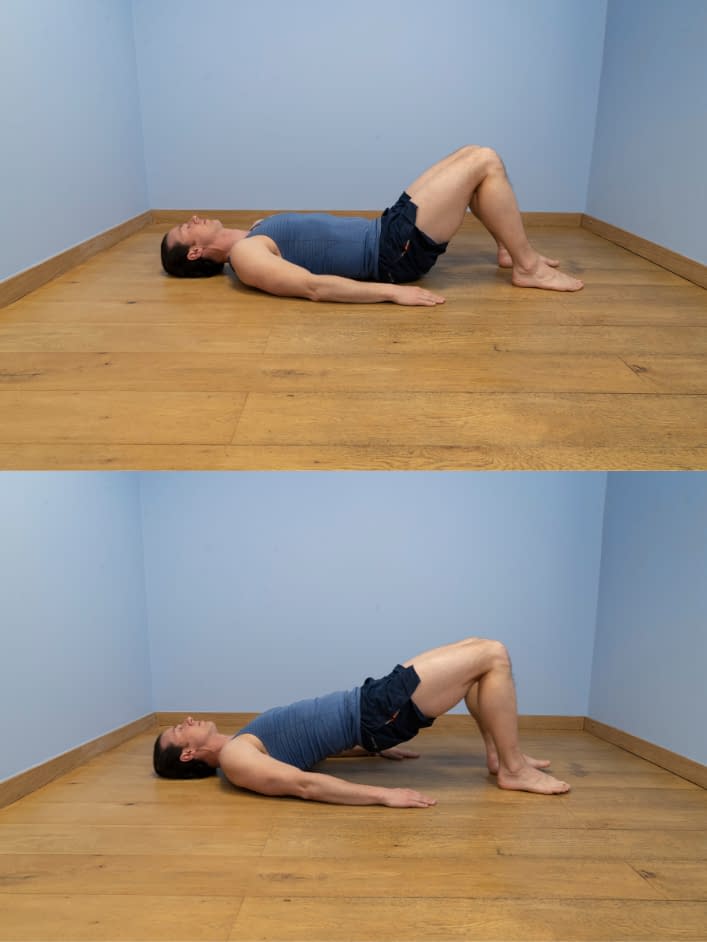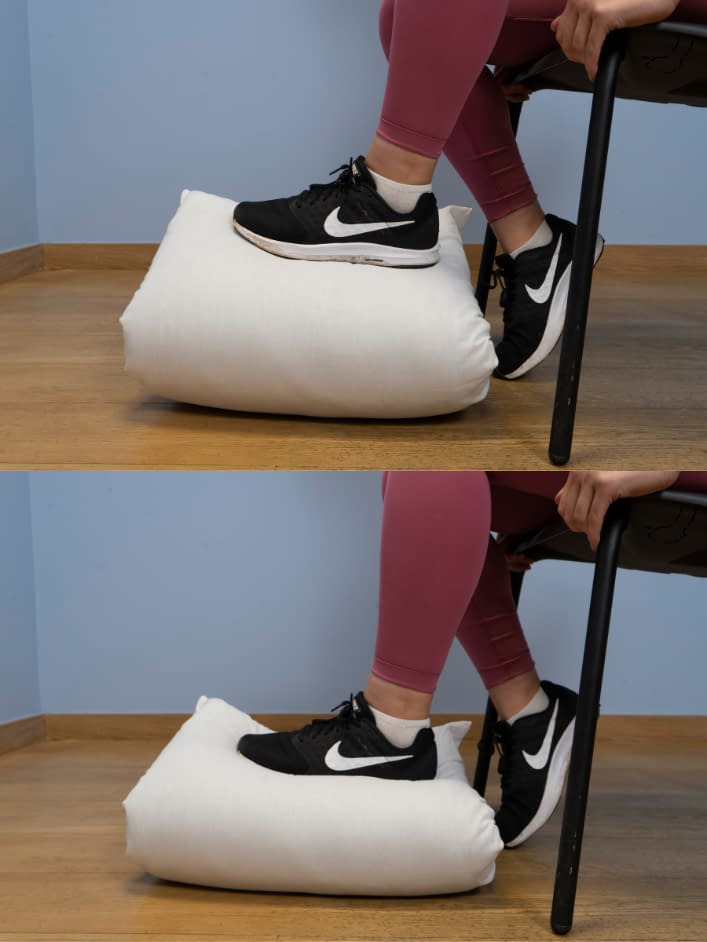Ankle Syndesmosis Injury Early Exercise Programme
This programme focuses on maintaining a range of movement and function within the ankle.
Pain should not exceed 3/10 whilst completing this exercise programme.
1. Ankle active range of motion - plantarflexion/dorsiflexion
- Sit or lay with your legs out straight, feet off the floor.
- Point the ankles and toes away from you and then bend them up towards you.
- Stay within a comfortable range of movement.
- A moderate stretch is acceptable.
2. Bridge in lying
- Lie on your back on the floor or bed with your knees bent at 90 degrees and your feet on the floor and your arms down by your side.
- Lift your hips off the floor. Lift as high as you feel comfortable but no higher than a straight line between hips, knees and shoulders.
- If you feel discomfort, then try squeezing your tummy and burn muscles before starting the lift.
- Hold at the top for 5 seconds.
- Push up as far as you feel comfortable, and pain and stiffness allow.
3. Isometric pillow press
- Sit in a firm, stable chair and place a pillow on the floor under the foot of the targeted leg.
- Push the foot down in to the pillow using thr thigh and buttocks muscles.
- Hold the squeeze at around 70% of your maximum effort, pain should remain at or below 3/10 on your pain scale.
We recommend consulting a musculoskeletal physiotherapist to ensure exercises are best suited to your recovery. If you are carrying out an exercise regime without consulting a healthcare professional, you do so at your own risk. If you have any concerns whilst completing these exercises, please contact a healthcare professional.
More Plans
Once the initial early phase goals of rehabilitation have been reached, further exercises and treatment to restore full range of movement, strength and endurance in the ankle can begin. These exercises may be progressed from non or partial weight-bearing to full weight-bearing and will aim to strengthen the ankle as well as other key muscle groups in the leg.
Manual therapy, mobilisation and soft tissue therapy may be continued to help promote pain relief, restore end of range ankle joint movement (8) and treat residual soft tissue tightness. A phased return to sport or activity can begin, with guidance and monitoring from your physiotherapist. This should not exceed more than 4/10 on your perceived pain scale.
- 0
- 1
- 2
- 3
- 4
- 5
- 6
- 7
- 8
- 910
Exercises at this stage may more closely mimic the demands of sport or physical activity and may involve more dynamic movements (plyometrics) or focus on muscle endurance. These exercises can be combined with a progressive and monitored return to play or sport, guided by your physiotherapist.
A high ankle sprain is a more complex injury than a lateral ankle injury (ligament injury to the outside of the ankle) and thus, complete recovery may take anywhere from 6 weeks to 6 months, depending on the person and the severity of the injury (9).
- 0
- 1
- 2
- 3
- 4
- 5
- 6
- 7
- 8
- 910


